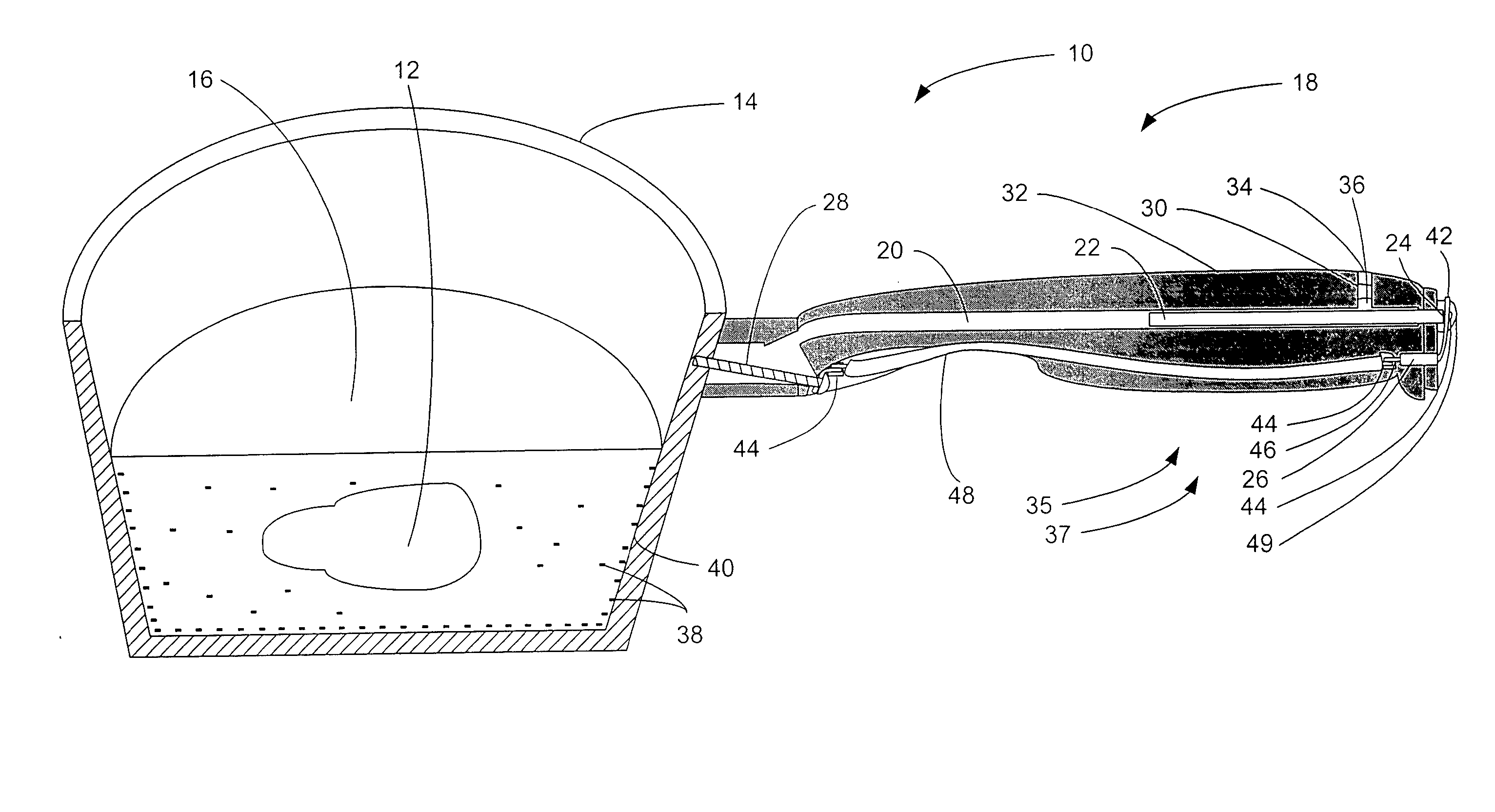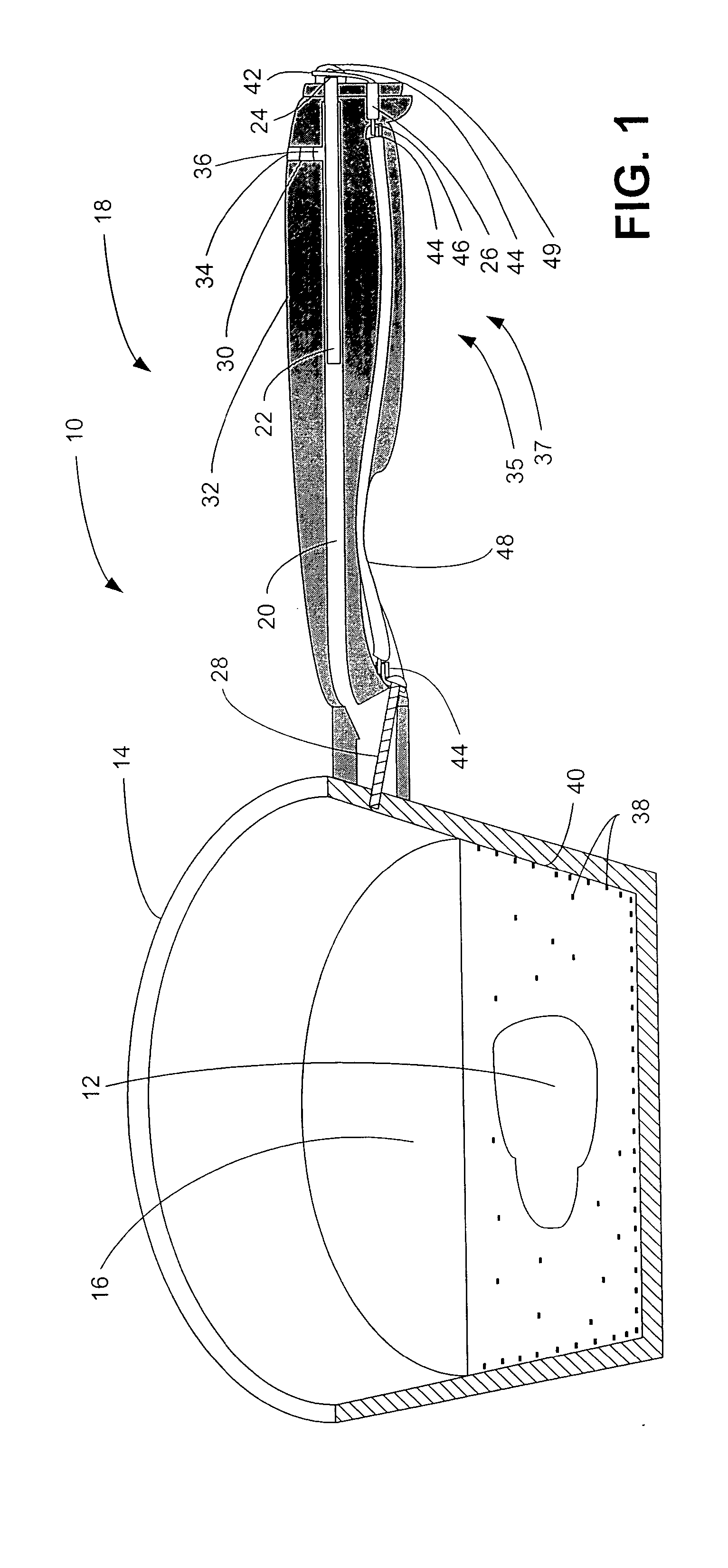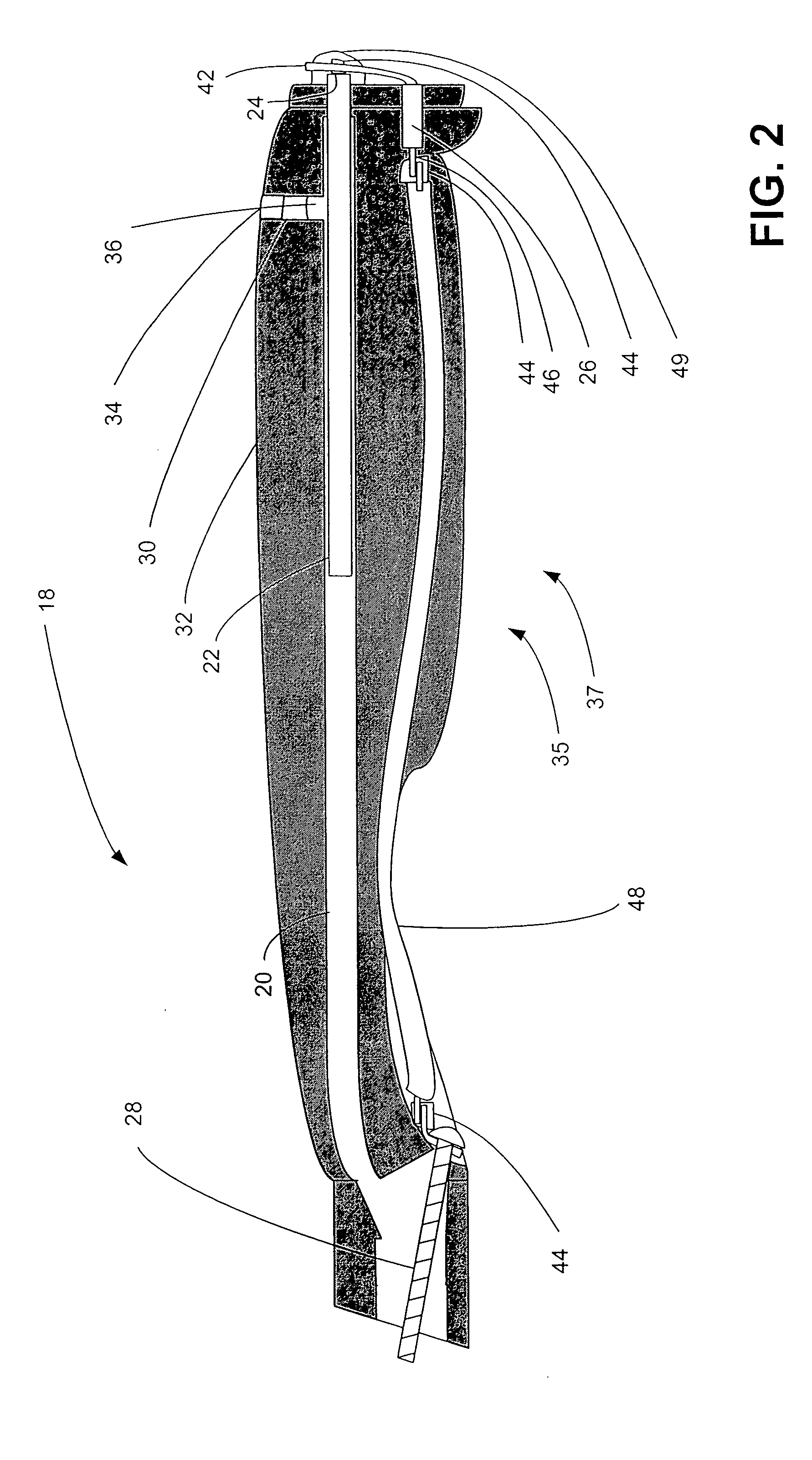Electron source for food treating apparatus and method
a technology of electric sources and food, applied in lighting and heating equipment, household stoves or ranges, furnaces, etc., can solve the problems of nerve damage, tend to have a carcinogenic effect, etc., and achieve the effect of inhibiting the formation of acrylamide in food
- Summary
- Abstract
- Description
- Claims
- Application Information
AI Technical Summary
Benefits of technology
Problems solved by technology
Method used
Image
Examples
example 1
[0064] Color is widely used as an index of oil quality. Oil color darkens as the amount of time the oil is used for heating or frying increases. Oil usage as indicated by oil color can be monitored using single or multiple wavelengths with a spectrometer. Color is recorded and compared for samples of two sample oils, i.e., Sample A Oil and Sample B Oil under various conditions. First, the color is recorded for a reference sample of each sample oil. Next, the color is recorded for a sample of each oil heated in a conventional cooking apparatus. Then, the color is recorded for a sample of each oil heated in a food treating apparatus of the present invention.
[0065] Specifically, a 100 milliliter (ml) sample of the Sample A Oil (Reference Sample A Oil) is placed in a clear jar. Next, a UV / Visible absorption spectra is recorded for Reference Sample A Oil using a Perkin Elmer Lambda 4B spectrophotometer with 10 millimeter (mm) glass cuvettes.
[0066] Next, a conventional cooking apparatus...
example 2
[0071] A thiobarbituric acid (TBA) standard test (see, for example, Sample and Analysis of Commercial Fats and Oils, AOCS Official Method Cd 19-90, Reapproved 1997—Revised 2001, “2-Thiobarbituric Acid Value Direct Method”, pages 1 and 2) may be conducted to measure the TBA result content in an oil used in the frying process. The TBA test measures aldehydes in a sample of the oil used in the frying process as an indicator of the oxidative rancidity of the oil. A liquid chromoto-graphy / mass spectrophy / mass spectrophy (LC / MS / MS) test may be used to determine the acrylamide content in food, e.g., french fries. The LC / MS / MS test measures acrylamide content in parts per billion in a sample of food.
[0072] The TBA result content and / or the acrylamide content of foods cooked in a medium, e.g., oil, in a food treating apparatus of the present invention and a conventional cooking apparatus can be compared as described by the example below. Specifically, the TBA result content and / or the acryl...
PUM
 Login to View More
Login to View More Abstract
Description
Claims
Application Information
 Login to View More
Login to View More - R&D
- Intellectual Property
- Life Sciences
- Materials
- Tech Scout
- Unparalleled Data Quality
- Higher Quality Content
- 60% Fewer Hallucinations
Browse by: Latest US Patents, China's latest patents, Technical Efficacy Thesaurus, Application Domain, Technology Topic, Popular Technical Reports.
© 2025 PatSnap. All rights reserved.Legal|Privacy policy|Modern Slavery Act Transparency Statement|Sitemap|About US| Contact US: help@patsnap.com



